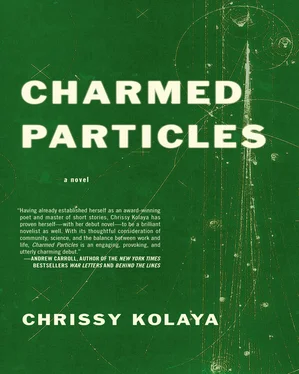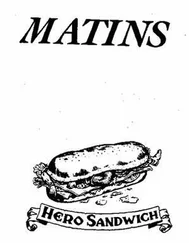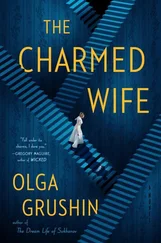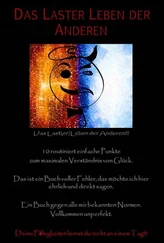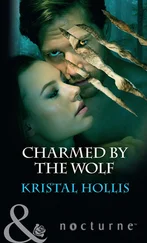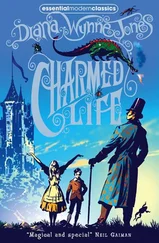The idea for Abhijat’s chart in chapter one comes from The Strangest Man: The Hidden Life of Paul Dirac, Mystic of the Atom by Graham Farmelo.
For the sections on Randolph’s expeditions, I’m indebted to the following books for inspiration: I Married Adventure by Osa Johnson, The Remarkable Life of William Beebe: Explorer and Naturalist by Carol Grant Gould, and Safari: A Chronicle of Adventure by Bartle Bull.
The quote from the farmer’s letter in chapter two comes from Fermilab: Physics, the Frontier, and Megascience by Lillian Hoddeson, Adrienne W. Kolb, and Catherine Westfall.
The captions and quotes from The Secret Museum of Mankind in chapters two and ten come from The Secret Album of Oceana and The Secret Album of Africa .
The blessing in chapter three comes from The Hindu Woman by Margaret Cormack.
The mosquito analogy in chapter four is paraphrased from To the Heart of Matter: The Superconducting Super Collider , 1987, Universities Research Association.
The title of chapter seven comes from a quote by Francesca Nessi-Tedaldi in an article titled “Crystal Gazing,” hosted on the CERN website.
For the details of Lily and Meena’s report and presentation in chapter eight, I’m indebted to Pat Shipman’s To the Heart of the Nile: Lady Florence Baker and the Exploration of Central Africa .
The quote Sarala remembers from her schoolbook in chapter nine comes from Women and Society in India by Neera Desai and Maithreyi Krishnaraj. The quote in chapter nine about turning coffee into papers comes from a personal interview with Adrienne Kolb, Fermilab, 2010. The list of questions Sarala finds on Abhijat’s desk in chapter nine comes from Fermilab: Physics, the Frontier, and Megascience by Lillian Hoddeson, Adrienne Kolb, and Catherine Westfall.
Quotes from the glossy reports produced by the Lab come from Siting the Superconducting Super Collider in Illinois: A Report to Governor James R. Thompson and members of the 84 thGeneral Assembly, 1985 and from To the Heart of Matter: The Superconducting Super Collider , 1985 and 1987, Universities Research Association.
The title of chapter fourteen comes from a letter from W. E. Gladstone to Roderick Murchison regarding Lady Florence Baker.
In preparing the chapters on the letters to the editor and the public hearing, I drew heavily on the Environmental Impact Statement and the records of the public hearings held in response to the Draft Environmental Impact Statement in Illinois in October 1988, in some cases reproducing bits of text verbatim. Much of the text of the public hearing comes from direct quotes from transcripts of the Superconducting Super Collider hearing held in October 1988 at Waubonsie Valley High School. Names and descriptions of the speakers in the hearing are fictional.
The quote from chapter twenty-two: “Very big projects don’t always have happy histories,” is from a personal interview with John Peoples, former director of Fermilab, 2010. The quote from the same chapter: “Now I’m going to have to wait until I’m fifty to understand what breaks electroweak symmetry,” comes from a personal interview with Andreas Kronfeld, Fermilab, 2010.
About Fermilab, the Inspiration for the National Accelerator Research Lab
Much like the novel’s National Accelerator Research Lab, Fermilab is a particle physics laboratory located in the Chicago suburbs. The lab focuses on research into one of the most enduring mysteries of science: what is our universe made of and how did it come to exist? Named after renowned Italian physicist Enrico Fermi, Fermilab houses the Tevatron, which ceased operation in 2011 but was for a time the world’s highest energy proton-antiproton collider. Its technology has since been outpaced by the Large Hadron Collider (LHC) at CERN in Switzerland, where scientists recently confirmed discovery of the Higgs boson and a new class of particle called pentaquarks. CERN has also been the subject of numerous conspiracies and much speculation about the creation of black holes, time travel, etc.
The story of the founding of Fermilab is fascinating. The campus is located on land that was once the town of Weston, Illinois, a town that no longer exists. Weston was annexed in the 1960s to allow for the construction of the Fermilab campus. As in the novel, many of the former town’s homes are still in use today as offices and to house visiting scientists and their families.
When Fermilab arrived, the area was still very much a small, rural community. Suddenly, this small farming community found itself home to a number of internationally renowned scientists. Over the years, this, as well as other forces and changing land-use patterns, have been at the root of the area’s transformation into a busy suburban community. For more information about the founding of Fermilab, I recommend Fermilab: Physics, the Frontier, and Megascience , which was invaluable to me in my research.
In the late 1980s, Fermilab was one of the sites under consideration to house the proposed Superconducting Super Collider (SSC), a project eventually begun in Waxahachie, Texas. Today, Fermilab is still considered by many to be the premier laboratory for particle physics in the United States. In recent years, Fermilab scientists have focused on experiments on dark matter, dark energy, and some really interesting projects, including an experiment called MINOS in which beams of neutrinos were sent underground all the way from Batavia, Illinois, to the Soudan Mine in northern Minnesota to help provide scientists with a better understanding of neutrino oscillations.
About the Superconducting Super Collider
The Superconducting Super Collider (SSC) was a real project under consideration at a number of locations around the United States. Scientists believed the collider would help them understand more about the matter that makes up the universe, and as such, would help them understand the circumstances under which the universe came to exist.
For many years, the United States stood at the forefront of physics research, and many proponents of the SSC believed its construction would help the United States retain that position. But this was the era of Chernobyl, of Three Mile Island; mistrust of the government was strong, and questions about the safety of scientific facilities were on the minds of many citizens.
Much like in the novel, physicists hoped the SSC would help to prove or disprove many of the theories about particle physics that were under consideration at the time. In the 1980s, the Department of Energy began the process of searching for an appropriate location for the collider. One of the locations under consideration was Fermilab and the surrounding communities. At the end of a long process that included environmental impact studies and public hearings, Waxahachie, Texas, was selected as the site of the future SSC.
Construction of the SSC began in 1991, but by 1993, with increasing costs, the U.S. government pulled the funding, having already spent $2 billion on the project. The Waxahachie location, where construction had already begun on tunnels and buildings, was abandoned. For many years, the partially completed site of the SSC stood empty, vandalized and filling with rainwater. (You can find some really interesting photographs of the abandoned site taken by urban explorers.) Recently, though, the site has been acquired by a company that uses it as a chemical blending facility and that has, in an interesting twist, preserved the initialism SSC, which now stands for the “Specialty Services Complex.”
Читать дальше
